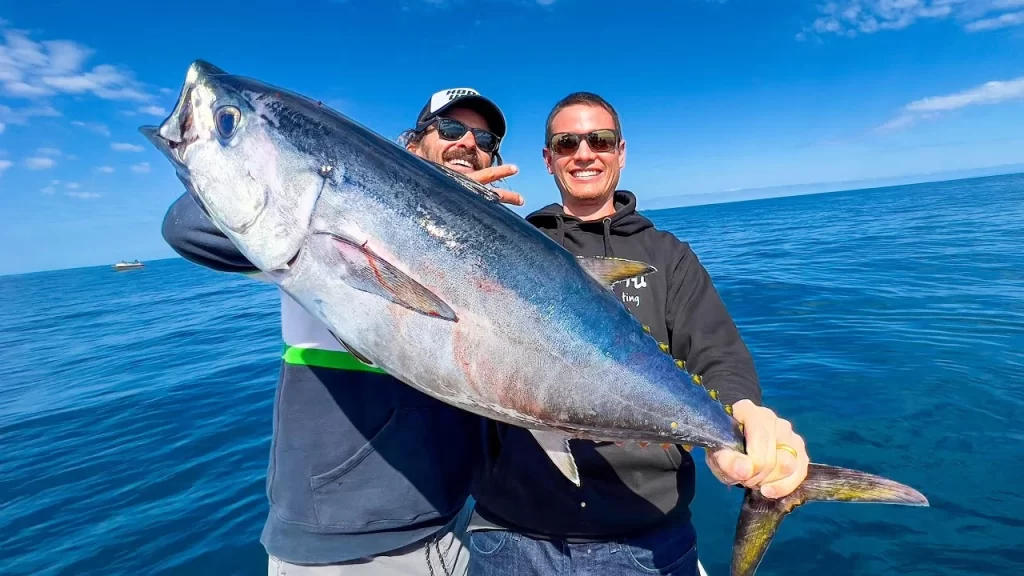Tuna is one of the most highly valued species of fish that exist in Spain, well known for their versatility and rich flavorful quality. Whether raw and put together in sushi or grilled to be part of any recipe, tuna has always played a valued role in the country’s cuisine.
In Spain, the retail price of tuna is between USD 1.94 and USD 8.23 kg, US$ 0.88 and US$ 3.73 per lb. While many wonder how much is a whole tuna fish in Spain. In this article, we’ll learn about the factors that affect the price of whole tuna, the various costs based on the species, and the way consumers and companies become interested in this fish in Spanish markets.
Knowing About Species
Tunas are definitely not all the same in the market. Various species are available, and among the most common are:
Bluefin Tuna (Thunnus thynnus): This is the most expensive species. Characterized by a rich flavor and high-fat content. It is mostly used for high-class sushi and sashimi, so this is one of the priciest kinds of tuna.
Yellowfin Tuna (Thunnus albacares): This is not as expensive as bluefin, but it is among the popular species that go into ceviche or tacos. The flavor is much milder but highly considered.
Albacore Tuna (Thunnus alalunga): It is a fish used widely in canned tuna, lighter than bluefin and yellowfin. This tends to be less expensive and can, therefore, be used in more routine preparations.
Factors That Influence the Price of Whole Tuna in Spain
The prices for whole tuna fish are determined by a variety of factors. This is knowledge that may be helpful for making purchasing decisions.
1. Demand in the Market
Demand is high for tuna and most of this demand is particularly bluefin. It happens that bluefin is a delicacy in sushi markets and restaurants of high scales, and at such events as “Tuna Auctions” held in Tokyo, this raises its prices that trickles down to the fish prices in Spain.
2. Seasonality and Availability
There are time bars depending on the seasons that bring upon the tuna pricing. Every species of tuna has its distinct fishing seasons; thus, their availability in the market would differ. Tuna would be more common during summer months, when they come in abundance making it expensive at other periods of time.
3. Size and Weight
The size of the tuna fish also matters. Whole tuna can weigh anywhere from a few kilograms to over 300 kg. Larger fish are generally more expensive due to their increased meat yield, although the price per kilogram can sometimes decrease with larger sizes due to economies of scale.
4. Quality and Grade
There could be a variation in tuna quality, including fat levels, color, and freshness, which could significantly increase prices. The highest value would be commanded by very high-quality tuna, mainly bluefin, with high marbling. To analyze the price of whole tuna fish cost in Spain, we recommend to read the whole blog.
Average Costs of Whole Tuna in Spain
Having established the factor influencing price, let us take a closer look at the average costs that whole tuna fish have in Spain. Generally, prices vary according to the type of tuna, fishing methods, and sales point; however, some general price ranges offer an excellent starting point.
Bluefin Tuna: The price of whole bluefin tuna can vary anywhere from €20 to €60 per kilogram; some exceptional specimens are selling for much more. At the higher end, it sells mainly in exclusive fish markets or directly to fine restaurants.
Yellowfin Tuna: Yellowfin tuna goes between €15 and €30 per kilogram. This is one of the cheapest species but preferred by consumers for quality and money value. In Spain, the retail price of tuna is between USD 1.94 and USD 8.23 kg, US$ 0.88 and US$ 3.73 per lb.
Albacore Tuna: The most common type is usually the cheapest, with the price range between €8 and €20 per kilogram. Albacore is generally sold more widely and used in canned products and is therefore popular for families.
How to Buy Whole Tuna in Spain?
If you have to buy whole tuna, you can find quality fish at the following places:
Fish Markets: In any city with coastal towns like Barcelona, Valencia, or Bilbao, you would more than likely find fish markets offering the freshest varieties of tuna. You’d be saving money, if possible, again compared to classy restaurants, as you’d be buying from the fish source itself.
Supermarkets: Many supermarkets in Spain have dedicated seafood sections where whole tuna (often pre-cut for sale) may be available. While prices can be higher in supermarkets, they offer convenience and a reliable source.
Online Retailers: An emerging trend is the online sale of fresh seafood. Many retailers now offer delivery services for whole fish, which can be a great option for those living away from coastlines.
Culinary Uses of Tuna:
Tuna is one of the favorite ingredients in various culinary applications because of its versatility. In Spain, tuna is used for the following traditional dishes:
Sashimi: Thin slices of fresh tuna, especially bluefin, are enjoyed raw to highlight the flavor of the fish.
Grilled Tuna Steaks: Yellowfin and bluefin are often grilled to perfection and seasoned with just a pinch of salt and pepper to let the natural flavors shine.
Tuna Salad: Albacore is very common in salads, making it a healthy and protein-rich meal option.
Canned Tuna: A staple in Spanish households. It is used in preparing empanadas, pasta, and other dishes.
Conclusion
The price for a whole tuna fish depends on the species, size, quality, and market. Bluefin tuna fetches the highest price in Spain, but yellowfin and albacore cost relatively cheaper for consumers.
Whether bought at a local fish market, supermarket, or online, one is sure to find excellent-quality tuna that fits the taste of any meal. Given the Spanish country’s growing celebration of seafood, it remains an essential component of Spain’s gastronomic identity and, thus is definitely worth investing in.




